Thorny vines drooped with the weight of ruby-red berries still a week away from summer ripeness. My daughter, Mackenzie, and I walked farther down the old logging road winding around the head of a steep hollow. We were searching for mature blackberries and raspberries with my four-legged kid, Rudy, bounding ahead as scout and then back to check our progress. We ended up with only half a coffee can of plump wine-colored berries that never made it out of the hills.
I’m not saying exactly where we were except that we were in the Ozark Mountains. It’s not that I’m worried about anyone else loading a bucket with berries; there’s plenty to go around. I’d just rather keep the location a secret to encourage your expedition into the forest. Finding hidden treasure on your own is more fun.
I found this particular blackberry patch years ago while chasing turkeys. Even as turkey populations across the state withered, there was always a gobbler or two roosting on this ridge. It’s a wild place. Bear and bobcat are common but rarely seen. An occasional “undocumented” mountain lion likely pads through on nocturnal treks because whitetail deer are plentiful, though, tough for a bowhunter like me to pin down. Elk have been spotted all around so it stands to reason that wafting bugles reach this ridge on late September mornings. It’s a wonderland if you’re into wild berries, wildlife and solitude.
There’s a creek at the bottom of the hill, and we ate our lunch in the shade of a sycamore on its banks. It’s a beautiful Ozark stream with clear running shoals and blue water swimming holes. It’s full of smallmouth bass, creek chubs, silversides, bullhead catfish, longear sunfish, hog suckers and various species of darters. The creek has quite a few visitors during the summer. Many of us locals grew up swimming in it and camping on its banks. We come back looking for memories in the deep pools of our childhood and sharing new experiences with our own children. But on this weekday morning it’s just Mackenzie, Rudy and me. We eat our lunch and wash our berry-stained fingers in the cool water. We can do all of this, enjoy all of this bounty, because this land belongs to us.
The Ozark National Forest engulfs 1.2 million rugged acres in the northern third of the Natural State. The Ouachita National Forest, running from eastern Oklahoma through the middle third of the state, covers 1.8 million acres. Three million acres of public land in National Forest and an additional 336,000 acres in Arkansas National Wildlife Refuges. And that’s not even counting the Corp of Engineers lakes.
For the record, I’m opposed to dams on principle for both economic and environmental reasons. But Southern folk, a region of the country that leans heavily toward the reduction of federal government land ownership, seem to forget about the fact that their beloved reservoirs and the metal-flake bassin’ industry it spawned were created and maintained by a division of the federal government.
Access to blackberries and bass are tangible, personal connections to federal public holdings in Arkansas for me. But one of the most powerful spiritual connections is found in eastern Arkansas, a 174-mile drive from my home. The trip transports me to a region that seems better suited to a different state compared to my normal stomping grounds. White River NWR, now known as Dale Bumpers White River NWR, contains one of the largest remaining hardwood bottomland forests in the Mississippi River Valley. It’s home to the Arkansas Champion bald cypress tree, an elder of the swamp. Actually, at an estimated 1,000 years old, it’s THE elder of the swamp. It’s likely the largest living thing in Arkansas. White River NWR is also home to the last remnants of native Arkansas black bears. Known as the “Bear State” before those left-coast folks even had a state, the bear population was hunted and trapped damn near to extinction before they found refuge along the flood-prone White River bottoms. Wilderness found refuge in the untamable lands of Arkansas. And though federal protection for those untamable lands came afterward, that protection enables us to experience wilderness today.

These are just the wonders in Arkansas. You could run down to Cajun country and spend an evening on Lacassine National Wildlife Refuge just south of Lake Charles, Louisiana, and let the primal rumble of bull alligators shake your core. Or you could hike into Cranberry Wilderness area for Appalachian brook trout in the wilds of West Virginia. And there are so many more opportunities to experience the natural and native South far from the crowds and lights.
It’s all right here and available to you and me with a flick of the shifter and a foot on the pedal.
We’re so spoiled to access to these wild places and wild things that we’ve moved even beyond taking it for granted and have somehow separated it from its source. It’s an idiosyncrasy of Southern culture which is derivative of Scots-Irish culture.
Scots-Irish culture is heavy on rugged self-reliance. Living off the land, at least symbolically, is why hunting and fishing are synonymous with rednecks. But another innate characteristic of Celtic thinking is a fierce distrust of top-down authority. The history of the Celts, even before they came to the British Isles, can tell you why this is, but these two defining traits grew stronger in the fertile frontier of North America. The irony today is that the former is largely dependent on denying the latter. It makes for some interesting contradictions among outdoor folks in the South. I heard cheers and understanding for the illegal occupiers of Malheur National Wildlife Refuge in Oregon from one mouth only minutes before I heard it utter plans to bowhunt Holla Bend National Wildlife Refuge here in Arkansas.
Cognitive dissonance, thy name is Dixie.

Access to outdoor pursuits is the foundation of our American outdoor heritage. It’s a heritage revered by less fortunate people around the globe. Whether you’re on the front lines in Utah or watching the politics from North Carolina, decisions about our federal public lands will drastically alter the course of this heritage.
Our kids and grandkids will look back on this second decade of the 21st century as a pivotal point in the story of American outdoor life. I hope they can look back with gratitude. I hope those down my line can whisper a “thank you” while sitting in the shade of a sycamore deep in the Ozark National Forest, splashing berry stained fingers in the cool waters.




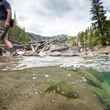






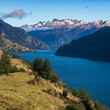





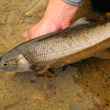



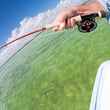




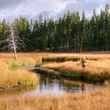



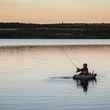
Comments
Jacob replied on Permalink
The great state of Georgia boasts a Wildlife Management Area within an hour's drive from every citizen in the state. I grew up hunting and fishing these WMA's and later started fly fishing, hunting sheds, doing clean-ups, and picking blackberries and morels on this public land as well. Relative to the west, we have very little public land in the south and it is often mistreated and taken for granted. I remember in high school, people used to take their trail rigs out to a specific WMA and have parties.
Now we have threats coming from state governments that wish to make a profit off this land rather than respecting and preserving it for future generations. Learn about the local issues and state issues revolving around you regarding public land. Do something to help out your local rangers. I have packed out more beer cans, food, worm canisters, and even a blow-up doll. Bring trash bags in your pack. get involved with a local river clean up. Email and write your representation. Act now before we lose it.
Pages